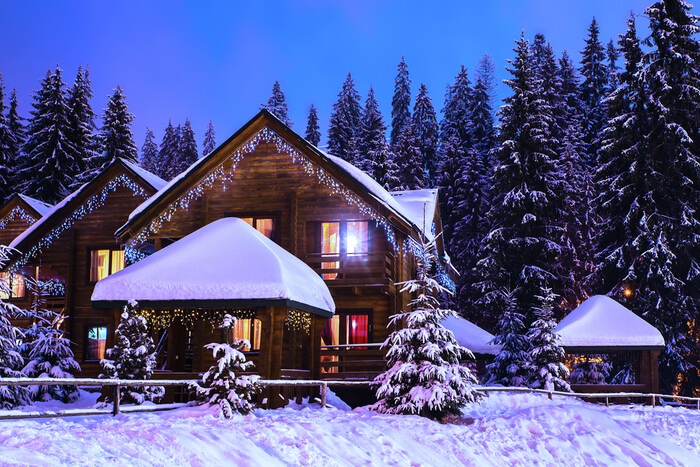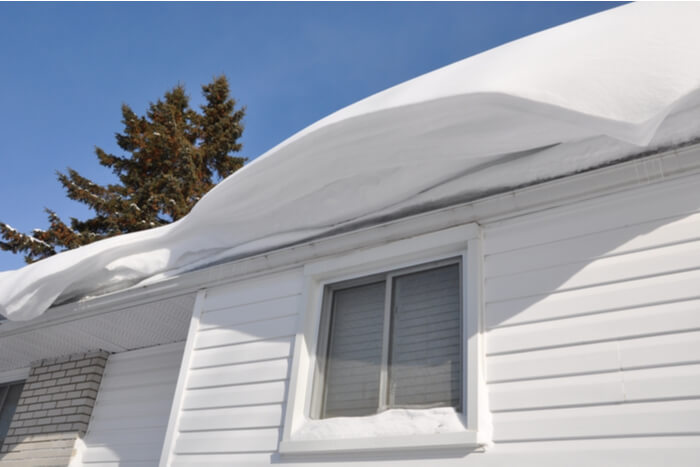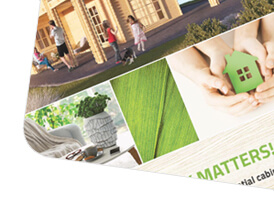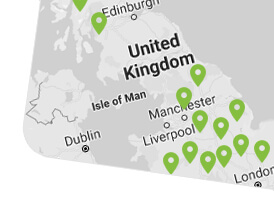As winter approaches frozen guttering, a thick layer of snow on the roof or large hanging icicles can become a reason for concern. Below you can find a few tips which will help you avoid the many problems and expenses that are all related with the winter period in a wooden house.

1. Insulate Water Pipes
It is highly recommend that all cellars, garages and other non-heated rooms in which a water pipe system is installed are inspected thoroughly ‒ there could be broken windows, gaps in the walls, doors or shutters which cannot be properly closed. Exposed water pipes in non-heated rooms should be insulated with insulation material. However, insulation material is not always helpful, sometimes it’s a good idea to attach heating cables to the water pipes.
2. Adjust Plastic Windows
In order to survive the depths of winter even plastic windows need to be checked for their insulation properties. As time passes, the windows and door jambs tend to curve slightly and as a result the closing capacity of the windows and doors is reduced. So, as winter approaches it is very important to adjust the windows and doors so that they close to their fullest extent.
3. Clean the Guttering
As a rule, guttering systems become blocked with autumn leaves, twigs and other debris which obstruct the rain water and snow from running freely. This is why it’s important to regularly clean the guttering. Even bigger problems can be caused by frozen water in the guttering. In winter the warmth rising from the inside of log cabin house or the sun rays heat the roof up to 0°C, which causes the snow to melt. While running down the guttering the water freezes and as a result, ice jams, ice formations and large icicles form. One of the ways to avoid such problems is to install self-adjustable heating cables in the guttering. Being sensitive to temperature fluctuations the cables do not allow water to freeze and to turn into dangerous overhanging icicles.
4. Be Aware of the Danger of ‘Snowslides’
If a thick layer of snow or ice accumulates on the roof, it can damage the roof covering and the guttering. To avoid this it is necessary to remove the snow from the roof on a regular basis. In order for the ice not to form on the roof, ensure there is a proper air circulation in the loft area.

In spring or in winter, when temperatures rise slightly, snowslides can damage the roof edges and rip off the guttering. And it goes without saying that snowslides can be dangerous for the people underneath. To protect yourself from any accidents, you can install special snow catchers, which should be installed 0.5m below the roof edge of a wooden house. It’s also recommended that heating cables are attached on the inner side of the roof which do not allow snowdrifts and icicles to form.
5. Take Special Care of Slippery Stairs
Slippery and snow-covered stairs or steps need immediate attention. To avoid accidents, it’s paramount to cover wooden house stairs with sand or salt. This said, salt can damage the stairs/steps covering while sand is easily carried into log house on the bottom of boots. A much more convenient and reliable way to protect yourself from accidents is to apply abrasive tape on the stair’s surface. Abrasive tapes can be put on all the slippery places thereby mitigating any risk of you or any visitors falling down and sustaining injury.











